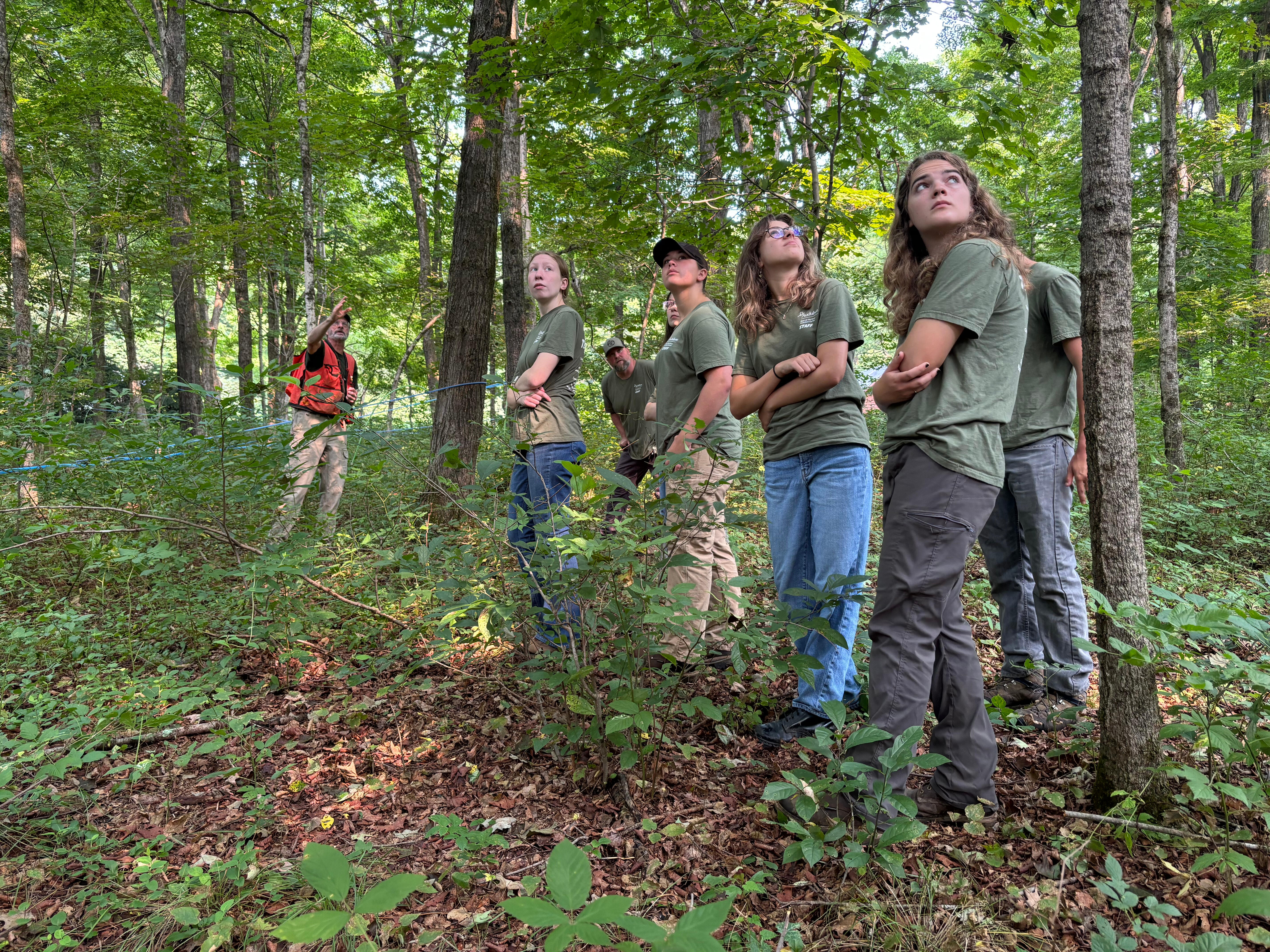The two CT DEEP foresters standing in front of our group manage about 30,000 of the 65,000 acres of State Forests in western Connecticut for sawtimber, firewood, wildlife habitat, hiking, hunting, and other mixed uses.
Today they are leading a tour of a local “Bird-Friendly Maple” recognized sugarbush for our Junior Forest Technicians (JFTs) – a group of high school students employed by the Bent of the River Audubon Center, where they get hands-on lessons and experience in forestry.
We go straight from the parking lot into the woods at the Upper Paugussett State Forest, where forester Jerry Milne manages 800 acres, 12 of which are a sugarbush with 750 taps.
The sugarbush at Upper Paugussett is also an actively managed harvest site, which the JFTs haven’t seen before at such a large scale. “When I first started managing this forest, I recognized its potential as a sugarbush,” says Milne.

“This area had previously been a pasture, and the trunks of the sugar maples were just a few inches in diameter. What I found was that I had a very thick forest of small trees, with a nice, gentle slope down to the east that would ensure gravity could bring sap down to a collection point.”
After testing the sugar content of the trees and determining they were viable, Milne enacted a plan to “thin” the area, or harvest some trees to allow light in, helping those small sugar maple trees grow to their full potential.
“What kind of birds would use a habitat like this?” asks Glen Somogie, JFT program manager.
The JFTs catch on immediately – “Scarlet Tanager?” “Vireos!”
“I think it’s an awesome resource to be able to go online and find different maple syrup producers who manage their maple stands for birds,” says Danni, JFT Crew Leader, referring to Audubon’s list of Bird-Friendly Maple producers. “Not only does it help support these businesses, but it’s benefitting important bird species like the Scarlet Tanager and Wood Thrush along the way, and educating the public about the numerous benefits of maple syrup production.”

With their training, they have become very familiar with the forest-dependent birds that nest and raise their young in the sugarbush. A healthy sugarbush has both tree species and structural diversity, from small seedlings on the forest floor, to saplings and shrubs, to a lush canopy overhead.
The group moves from the sugarbush to the site of a 48-acre “selection harvest” in the Lower Paugussett, where the forest is regrowing in the form of young oaks and other native species. Forester Jill Humphreys explains to the JFTs that this management benefits the New England Cottontail, as well as birds that depend on young forest – like the American Woodcock and Chestnut-sided Warbler.
“As soon as we got out of our cars, I immediately heard a huge difference in bird abundance and diversity. I was really impressed and surprised by this because growing up, I always thought that cutting down trees and altering the forest in that type of way was harmful to birds and wildlife, when it really allows other tree and shrub species that are beneficial for birds to grow and flourish in the understory, and trees in the canopy do not have to compete for resources and sunlight,” added Danni.




